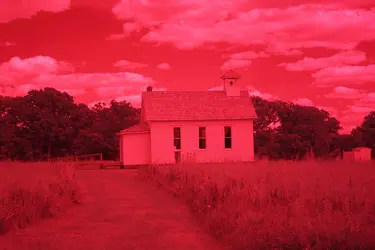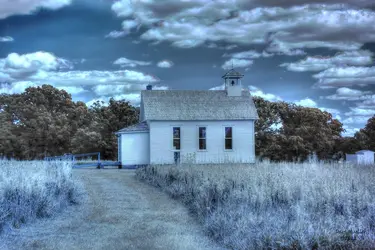zombiemann
TPF Noob!
- Joined
- Aug 8, 2012
- Messages
- 359
- Reaction score
- 24
- Location
- Illinois
- Can others edit my Photos
- Photos OK to edit
I've been playing around with IR photography lately. It can be a bit.... tricky trying to get the exposure right. As such I've taken to shooting 3 bracketed shots to give myself a better chance of capturing the right exposure. With the IR filter on the camera the built in metering is worthless, so is autofocus. And while I understand the fundamentals of exposure/aperture/ISO/etc even an educated guess is still a guess. I did some IR work today and got the bright idea to try stacking one of my brackets. I went through and made sure I had a consistent white balance, swapped my red and blue channels as usual when processing IR shots (gives it a blue sky and makes it look less like a film negative). I then fed them through photomatix. The first image is the "neutral" exposure of the stack "as shot" with no white balance or anything other than convert to jpg and resize. The second image is stacked and tone mapped to B&W. The third is a color tone map that I think works well for this pic. Keep in mind, this is not shot in visible light, so the fact that it looks "weird" is part of the goal.














![[No title]](/data/xfmg/thumbnail/41/41797-ed370d68dae70f5b0a7252ec2d525912.jpg?1734176109)

![[No title]](/data/xfmg/thumbnail/41/41796-690c109012575e084970902dbd3894ba.jpg?1734176108)



